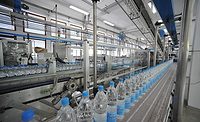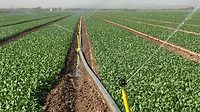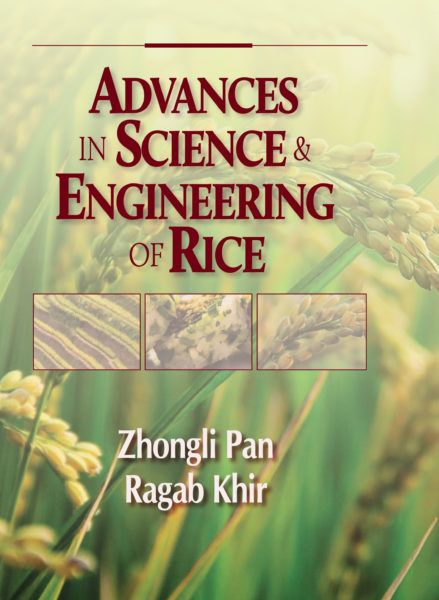Air Quality
Air Treatment Systems by Aeris in the New ‘First One’ Pet Production Line
_900x550.jpg?t=1699631772&width=1080)
Image courtesy of Aeris
_900x550.jpg?t=1699631749&width=1080)
Image courtesy of Aeris
_900x550.jpg?t=1699631733&width=1080)
Image courtesy of Aeris
x-900x550.jpg?t=1699631713&width=1080)
Image courtesy of Aeris
_900x550.jpg?t=1699631772&width=150)
_900x550.jpg?t=1699631749&width=150)
_900x550.jpg?t=1699631733&width=150)
x-900x550.jpg?t=1699631713&width=150)
Located in San Vito al Tagliamento (PN), Italy, is the new plant for pet food production by First One, a company from Milan referred to Agrifarma, owner of Arcaplanet, a national leader in specialized shops for pet products.
The purpose of the new facility is to increase the processing and marketing of high-quality food for pets, using innovative machinery and technologies conform to Industry 4.0. A high-tech production foresees an innovative and careful design; this includes a purification plant as well as a filtration system for the emissions connected to the production process and barrier systems that stop the dust and remove any smells.
Tasked with this work was Aeris, a company located in Bergamo that has more than 30 years of experience in the filtration and removal of pollutants generated by production processes (such as dust, production waste, fumes and aerosols) and the air treatment of big industrial spaces.
The company can also create customized systems that allow Aeris to work in concert with the main engineering contractors who, in this case, were responsible for the design of the new “First One” production plant covering a total area of 34,008 square meters (366,059 sq. ft.), with a maximum capacity of 61,000 tons/year of dry products.
The Aeris System: Dust Removal with Filtration and Wet Scrubber
The Aeris proposal for the new production site consists of a pre-treatment system for the air coming from the new PET production line before final filtration, carried out with electrostatic filters.
The dust and VOCs sucked into the different points of the production plant are conveyed into two separate filtration systems. The first element of the pollutants reduction circuit is the dry filtration system, placed to protect the air-water and air-air heat recovery systems used for the energy efficiency of the complete production line.
It works with pressostatic control, monitoring the filter cleanliness level and the clogged filter media alarm. Executed with filter bags made of calendered PES where the conveyed dust is deposited, the dry pre-scrubber eliminates dusty particles from the air that can cause damage to human health and the environment.
It is connected to a centrifugal suction vacuum pump and a cyclonic separator equipped with continuous discharge of the collected dust, which eliminates the dry particles with high specific weight and coarse dimensions.
The clean air coming out of the filters is then sent to the wet abatement section. The horizontal washer—consisting of an air-water mixing chamber—provides the final abatement of the residual micro-dust and the elimination of the VOCs present in the aeraulic flow.
The horizontal scrubber, equipped with a water recirculation tank, has Redox and PH control with the relative dosing pumps of passivating products, the reintegration water loading and the automatic draining of the tank. The treatment ends in the final electrostatic elements responsible for eliminating the olfactory components of the pollutants.
Air Treatment, Heat Recovery, Balancing and Conditioning in the Packaging Department
“The presence of fixed exhausts for an air quantity equal to approximately 160,000 m3/h involve the importance to reintroduce an air volume almost equal to what exhausted from the production departments to avoid important temperature fluctuations, difficult to tolerate both for the operators and the machinery,” says Eros Nani, Aeris CEO.
“The exhausted air has an important thermal content which, if appropriately recovered, can provide thermal energy free of charge for different uses such as the air pre-heating for oven burners and air pre-heating for balancing and conditioning the departments in winter time.
“Not being totally cleaned from volatile micro-dust, the hot air exhausted from the line coming from cyclonic separators must be handled with a treatment plant. In case of First One, it must be avoided the clogging of the heat recovery system installed in line,” he adds.
In response to this requirement, Aeris planned the installation of three self-regenerating air filters of its own development and know-how, which solve the problems of thermal recovery and air balancing/ conditioning in the packaging department.
With filtration efficiency up to Eurovent F8, the proposed system separates the exhaust air flow from any dry or greasy particle that could compromise the following treatment stages: Everything that is separated from the air flow is continuously separated through a special cyclone, equipped with an exhaust rotary valve.
Two filters are used to treat the transport and exhaust air of the pneumatic line and are combined with the air-water heat recovery systems. The third filter, to treat the hottest exhaustions coming from ovens, serves a group of three air-air recovery systems for the direct preheating of burners feeding flow, to ensure the supply at the highest possible temperatures.
The air-water exchangers during winter provide a total thermal capacity of approximately 1,000kW to pre-heat the air introduced into the treated areas. At the bottom of the filters and heat recovery systems, before introducing air into the electrostatic deodorizing system, there are an air washing coil and high-speed horizontal scrubbers designed for PH and Redox control of the water tank and the related pumps for dosing passivating products suitable for reducing VOCs.
The air volume exhausted from the line, approximately 160,000 m3/h, is partially balanced by the direct introduction of burners preheating air through the rotating disk heat recovery systems (equal to approximately 60,000 m3/h) and by a unit for the direct reintegration of mostly exhausted air quantity in the dept.
Sized for 80,000 m3/h, the balancing unit will work exclusively using completely the outside air, with variable flow rate depending on the real exhausts of the line. Equipped with air filtration, Eurovent F7 efficiency and a hot water heater (coming from the air-water recovery systems), the unit is equipped with a special evaporative cooling section fed by osmosis water. A solution maintains, even in summer with very hot temperature conditions, an intake air temperature within the maximum of 25°C (77°F).
For the packaging department there is a dedicated unit with approximately 5,000 m3/h capacity for the air change, a necessary amount for environmental well-being. The unit, besides the winter heating, includes a cooling coil fed by well water with a cooling capacity of approximately 150kW that is able to maintain comfortable temperatures without affecting the energy costs. The department will remain at a slightly lower pressure due to the contact with the remaining production area giving the ability to stop any possible odor leaks toward the neighbors.
The plant is managed automatically by electric panels and PLCs interconnected to the company LAN network and production lines, in full compliance with Industry 4.0 requirements.Looking for a reprint of this article?
From high-res PDFs to custom plaques, order your copy today!



-Photo-by-Clay-Banks-on-Unsplash.jpg?height=200&t=1692630940&width=200)



_900x550.jpg)
_900x550.jpg)
_900x550.jpg)
x-900x550.jpg)